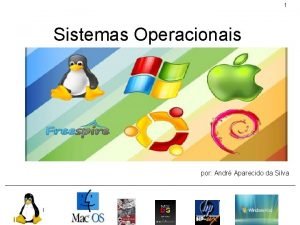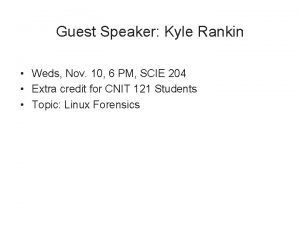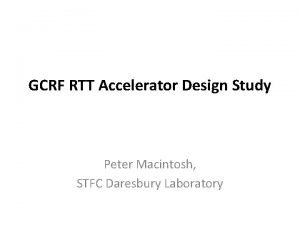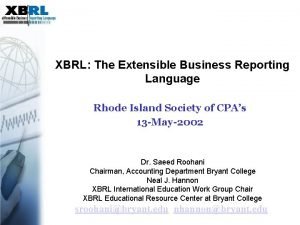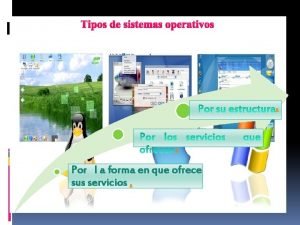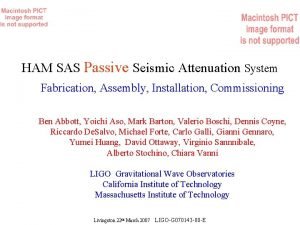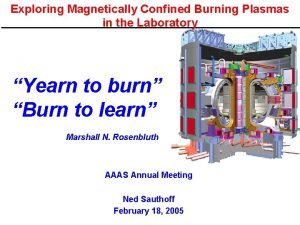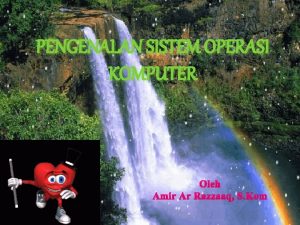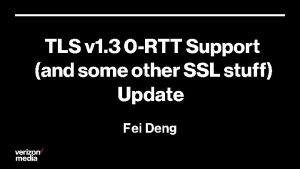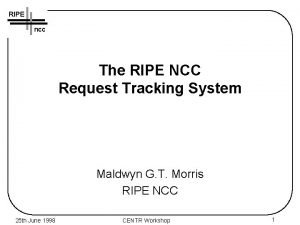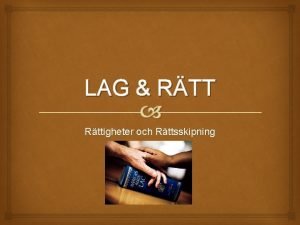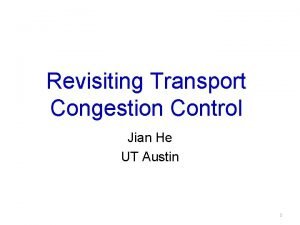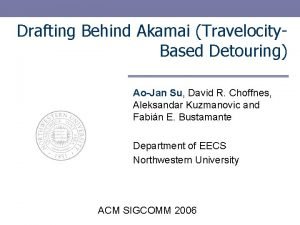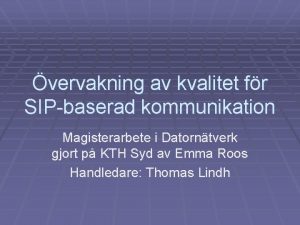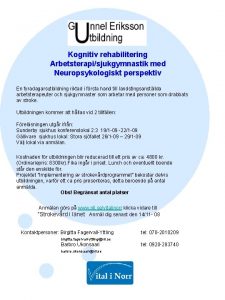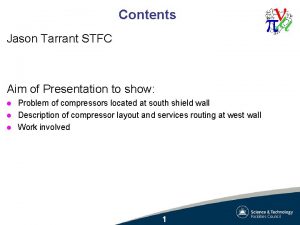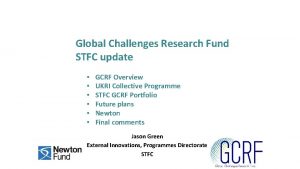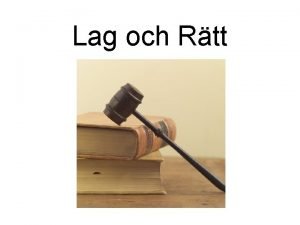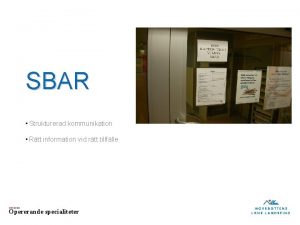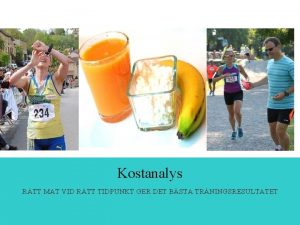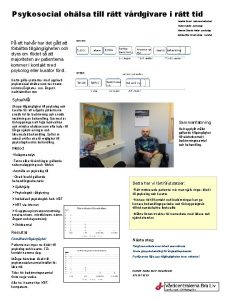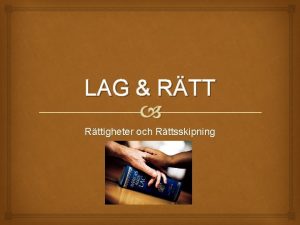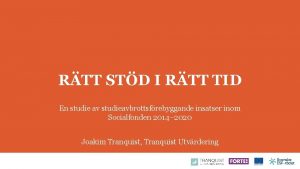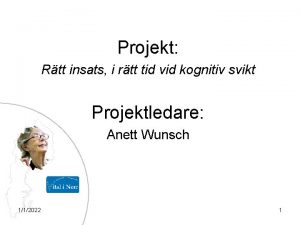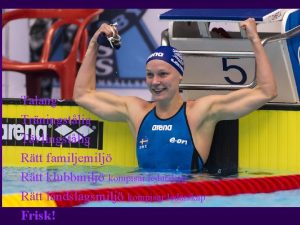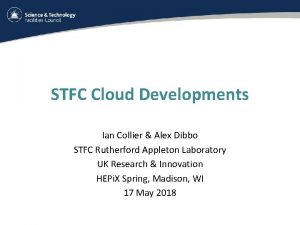GCRF RTT Accelerator Design Study Peter Macintosh STFC

























- Slides: 25

GCRF RTT Accelerator Design Study Peter Macintosh, STFC Daresbury Laboratory

Outline • • • Challenge and Opportunity Project Scope Benefits Staffing Partners Costing

ODA Challenge • Global cancer challenge: – 15 million (2015) to 25 million in (2035) • Effective cancer care uses RT for about 50% of the patients. • 1 million inhabitants recommendation is 5 or more linacs. Challenge in Africa: • How to go from no or limited RT to high quality RT globally.

Global RT Picture (2017)

ICEC-CERN-STFC R&D Activities • 3 workshops organised: – Nov 2016 @ CERN – Nov 2017 @ CERN – Mar 2018 @ Daresbury • Remit for workshops to find best ways to ‘Bury the Complexity’ of RTT systems, to enable a solution which is most effective for application in challenging environments. • Five STFC GCRF ‘seed-corn’ projects 17/18 funded covering: – Rn. D 1 Study of Accelerator Technology Options – P Mc. Intosh STFC – Rn. D 2 Robust Permanent Magnet Beam Delivery Systems for Medical Radiotherapy Linacs – S Sheehy Oxford – Rn. D 3 RF Power Systems and Optimized RF Structures for Electron Beam Acceleration – I Konoplev Oxford – Rn. D 4 Linear Accelerator Simulations for Stable and Sustainable Operation of Developing Country Radiotherapy Linear Accelerators – S Boogert RHUL – Rn. D 5 Cloud-based Electronic Infrastructure in Support of Linac-based Radiotherapy in Challenging Environments – A Aggarwal KCL • STFC Opportunities Call 18/19 covering: – A modular, integrated electron gun and RF cavity for RTT systems in developing countries – Graeme Burt – Novel optimisation framework for real-time automated radiation therapy – Suzie Sheehy – Dosimetry and multi leaf collimators of RTT machines – Jaap Velthius/Lana

STFC Funding Opportunities Global Challenge Research Fund Framework criteria: – – • • • problem and solution focus research excellence likelihood of impact capacity building and partnerships Proposals required to demonstrate relevance to promoting the economic development & welfare of developing countries. Vital that applicants consider the international development context of their proposed projects, including socioeconomic and environmental factors as appropriate. Projects must focus on evidenced, unmet needs identified by stakeholders and/or collaborators in countries on the Development Assistance Committee (DAC) list. 21 st Century Challenge Network Fund • • • Focused on addressing user needs, including those of Government departments, Government agencies, industry and other academic communities. Defined as the big and often complex social, environmental and economic challenges facing the UK and other countries. – Examples: energy, infrastructure, resources, health, development, defense, security and resilience Develop interdisciplinary communities focused on addressing challenges through: – Enabling engagement of STFC researchers, with challenge owners, – People exchange, – Exploratory workshops, – Sandpits and scoping studies. Closing dates for both calls in Sept/Oct 2018

RTT Platform Development Project STFC Global Challenge Research Fund WP 1 Management WP 2 Specification • • • Beam delivery parameters Patient treatment requirements Operational tolerances Simulations RAMI analysis WP 3 Accelerator • • Electron beam generation (Opp 18/19) Linac and RF (Rn. D 1+3 and Opp 18/19) Beam diagnostics Simulations and Controls (Rn. D 4) Vacuum systems Power supplies Gantry configuration WP 4 System Integration • Packaging • User interface WP 6 Beam Delivery • Magnets (Rn. D 2) • MLC’s (excluded) WP 7 Sustainability and Maintenance • Modularisation • Servicing and Maintenance Project structure defined at ICEC-CERNSTFC 3 rd Workshop in March 2018 STFC 21 st Century Networking Fund WP 8 Imaging • CT scanning • Data acquisition WP 9 Dosimetry and QA WP 10 WP 11 GRACENet • Remote diagnostics Treatment Planning • Cloud/grid/data architecture (Rn. D 5) Education and Training • Outreach WP 12 WP 13 Costs Installation WP 14 Industrialisation • Utilities and services • Shielding Not included in either proposal

GCRF Project Scope • This Accelerator Design Study will identify the fundamental specifications for an appropriate RT treatment system for application in the challenging environments associated with ODA countries, particularly those on the African continent. • A suitable electron-beam accelerator will be developed which matches those requirements, incorporating modern optimization processes and technologies which are able to provide robust operation and modularized implementation: – – Electron beam source Linear accelerator RF power source Beam delivery system • The system integration of such technologies will exploit value engineering and failure mode analysis techniques which can offer a more cost effective treatment platform solution: – – Simpler installation Robust operation Easier to maintain Reduced cost • This programme channels each of the 5 STFC GCRF ‘seed-corn’ activities into a common reference design process.

Global Benefits • ODA Recipients: – Provide basis for an innovative RT system design which is: • • more reliable, easier to operate, simpler to maintain, cheaper to procure and operate. • ICEC-CERN-STFC – Strategic partnerships developed between specialist ICEC CERN and STFC expert groups. – Reputation enhanced in field of medical accelerator delivery. – Puts collaborative programme in strong position for nextphase technology development opportunities.

Conventional RTT Technology RTT ADS Project Scope ®

GCRF Accelerator Design Study (ADS) Project Structure WP 1 Management P Mc. Intosh (STFC) WP 2 Specifications WP 3 Accelerator S Grover (UPEN) D Angal Kalinin (STFC) G Burt (ULAN) S Chinedu (NHA) WP 4 System Integration D Cheneler (ULAN) Packaging X-Ray Beam Parameters Electron Gun Patient Treatment Requirements Linac/RF User Interfacing Simulations Modularisation Operational Tolerances RAMI Specification Environmental Constraints Gantry Provision Beam Delivery Servicing and Maintenance Modularisation and Maintainability Control System

Partners • STFC – ASTe. C and Technology Dept – – – Management Electron Gun Simulations Modularisation and Maintainability Control System Beam Delivery • Lancaster University – – Gantry Provision Linac/RF Simulations System Integration • Oxford University – – Linac/RF RAMI Simulations Beam Delivery • Strathclyde University – Electron Gun • Kings College london – Patient Treatment • University Pennsylvania-Botswana – X-Ray Parameters – Patient Treatment • National Hospital Abuja, Nigeria – – Patient Treatment Operational Tolerances Environmental Controls System Integration

Specialist Advisory Partners • International Cancer Expert Corp (ICEC) – Oncologists – Medical Physicists – Toxicologists – Technologists • CERN – Medical Applications – Accelerator Design Specialists • Linac and RF systems • Integration and Modularisation

How to move forward: Global Radiotherapy Access in Challenging Environments Network ‘GRACENet’ Dr. Suzie Sheehy University of Oxford (& University of Melbourne)

GRACENet: the vision Enormous thanks to all our ODA partners for their support and help, as well as Ajay Aggarwal, Manjit Dosanjh, Simon Jolly (UCL), David Pistenmaa and Norm Coleman who worked on this proposal. The delivery of affordable and equitable radiotherapy treatment is a Global 21 st Century Challenge GRACENet aims to enable equitable access to cancer treatment by bringing together a unique multidisciplinary network. Together we will scope and undertake research projects, consider opportunities for new technological innovations that meet country-specific challenges to broadening radiotherapy capacity, and consider sustainable models for education/training

GRACENet: the partners

Aims/Objectives NETWORK Create a multidisciplinary network aimed at improving access, capacity and capability of ODA Countries to deliver high quality radiotherapy for cancer care INTERACT Bring together disciplines who don't usually interact, break down academic silos and produce true challenge-led & responsible innovation. Position new multi-disciplinary research teams to leverage additional funding. TRAINING/EDUCATI ON COMMUNICATION Identification and pilot programmes of sustainable training and education initiatives to address shortfalls in expertise. Disseminate the work of the Network through publications, reports, publicity and a dedicated website. Undertake a public/patient outreach programme co-designed and delivered with ODA partners. PROJECTS Produce a range of small pilot projects codesigned with ODA partners which will offer demonstrable impact at the clinical interface. Consolidate and grow existing relationships between UK based academic institutions, NGOs (ICEC, UICC, AFRICSIS) and key international institutions and professional bodies (ESTRO, IPEM, CERN) as well as other leading international institutions in global cancer research.


Systems engineering/integration • consider how these access barriers may be overcome so services can be set up over a short time frame even in settings which lack many elements of the basic infrastructure required. • Address environmental factors, external power sources, packaging or portability, adaptability as well as space requirements. • Examples include: – the creation of a temporary shielded facility within existing buildings to reduce the service setup time, – the design of a portable linac solution e. g. in a shipping container, with an all in one diagnostic CT and treatment delivery capability to enable radiotherapy to be delivered safely in remote locations.

System Functionality • ensure that treatment quality in LMICs is not compromised by the complexities/issues with equipment and interface functionality. • Learn from the experience of radiographers, radiotherapy technicians and other ODA staff to address functionality aspects of radiotherapy systems and validate concepts for operation and user interface. • It will also explore ‘modular’ systems to address this challenge including on-board dose monitors, on-board k. V portal imaging and/or CT imaging, patient setup systems, streamlining of treatment processes, data architecture and data acquisition.

Service Sustainability & Maintenance • focus on the infrastructure necessary to provide sustainable delivery of service and maintenance to ensure clinical operation. • initiatives to deliver sustainable training and education aspects of technical staff, • opportunities for developing remote engineering maintenance, on-board machine diagnostics, dynamic monitoring of radiotherapy systems, and considerations for creating a more robust accelerator design.

Treatment Automation & Remote Systems • define and undertake R&D to automate many of these processes, • minimize the time from diagnosis to initiation of treatment • reduce the personnel requirements. • increase throughput, reduce costs and increase capacity of the radiotherapy service. • use of clouds and grids have the potential to facilitate remote training, maintenance, treatment planning and international research collaborations.

Other aspects: communication • Create a website for the Network • A regular newsletter for policy makers and wider audience. • Publish easily readable articles in magazines, popular science and media outlets. • Continue to engage with media to enhance visibility (BBC, documentaries etc…) • Publish results in high quality peer reviewed journals • A co-created public/patient engagement programme to overcome patien

Reviews “Compared to what this network can rapidly accomplish to progress through mentor/mentee relationships, fostering new collaborations among thought leaders, and realization of many opportunities to develop novel concepts and projects in low- and LMICs … the added value for the proposed budget seems to be many orders of magnitude, in my opinion. “There is no question about importance of the project and the possibly very significant impact it may have on the provision of the radiation therapy in the low and middle income countries, if delivered successfully. ”

Conclusions • We have identified, together with everyone in this room, the challenges we are facing. • We know how to move forward • Networking is essential to our goals • We will continue to seek greater funding to help this collaboration improve access to radiotherapy.
 Head tilt chin lift jaw thrust
Head tilt chin lift jaw thrust Macintosh
Macintosh Hay macintosh en la sala de clases
Hay macintosh en la sala de clases Macintosh
Macintosh Macintosh
Macintosh Macintosh
Macintosh Sistemas operativos distribuidos
Sistemas operativos distribuidos Macintosh
Macintosh Macintosh
Macintosh Komputer dengan sistem operasi macintosh sering disebut
Komputer dengan sistem operasi macintosh sering disebut Rtt
Rtt Mail rtt monitoring
Mail rtt monitoring Rtt sverige
Rtt sverige Fluid mechanics chapter
Fluid mechanics chapter Rtt
Rtt Rtt
Rtt Rtt samtal
Rtt samtal Zhvillimi kognitiv
Zhvillimi kognitiv Ukri
Ukri Mark thomson stfc
Mark thomson stfc Stfc scouts
Stfc scouts Tom britton stfc
Tom britton stfc Stfc
Stfc Carol went shopping yesterday
Carol went shopping yesterday Stfc interactive map
Stfc interactive map Jason tarrant
Jason tarrant

